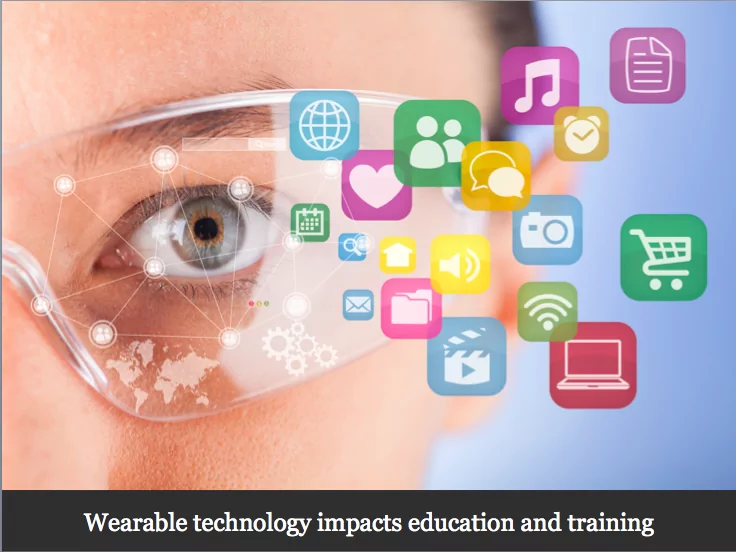Wearing Your Training? Start with the Accessories

Over the past year, wearable technologies have gained increased visibility. From Google Glass to the iWatch to clothing embedded with sensors, wearable technologies are slowly beginning to redefine computing and fashion. Over the past year, there has also been a growing focus on how wearable technologies hold the potential to impact education and training. While the future of wearable technologies remains unclear, at least a few potential workplace training innovations appear promising and likely to become widely embraced over the coming decade. To begin, consider the potential impact of the following three accessories—glasses, hats and shoes.

Smart Glasses
On January 15, 2015, after much hype and skepticism, Google announced that it would stop producing its Google Glass prototype but it hasn’t abandoned its original concept. In its short life, Google Glass and its competitors found many adopters, including in the training sector. The medical sector, which was also an early adopter of tablets, proved especially enthusiastic. One University of California medical school even issued Google Glass to all their incoming students. In short, smart glasses promise to put the information currently available on tablets and other mobile devices into a format that will free up our hands again. For doctors but also for a myriad of other workers who now rely on tablets and mobile phones on their job, the prospect of getting one’s hands back is not only appealing but also critical.
Smart Hats
Construction sites remain dangerous environments, even with modern safety standards. Indeed, construction sites have one of the highest levels of workplace fatalities in the US. This has much to do with the fact that construction sites are dynamic places characterized by many variables. After all, construction sites bring together multiple workers, often from different work crews, to engage in different tasks simultaneously. Reducing accidents and fatalities is contingent on developing better safety policies, enforcing them and increasing safety training but this is only possible with more refined data about what is known in the industry as “hazardous worksite proximity situations”.
To date, the construction industry has been notoriously slow to embrace new technologies for work and training purposes, but the development of the SmartHat promises to change both how the industry carries out its work and how it develops safety policies and carries out safety training. The SmartHat uses mobile technologies to help gather and deliver real-time information on construction sites. As studies have shown, real-time safety technologies on construction sites can provide alerts to workers and operators so they know when a collision is about to occur and avoid it. However, the SmartHat also promises to gather data over time. This data can then be analyzed and used to more accurately predict conditions that hold high potential for hazards and in turn used to create new policies and more effective safety training in the construction industry.
Smart Shoes
For some time, technology enthusiasts have been bestowing the virtues of smart shoes, which will connect one’s feet to their GPS device and as a result, be able to guide walkers from place to place. While smart shoes may appear to be primarily a gimmick, they do hold the potential to be used in workplace situations and in training scenarios. Smart shoes may be able to help workers avoid certain hazards on a worksite. They also hold the potential to help retail sales staff be where they need to be without being summoned on an intercom and while remaining hands free. From a training perspective, because smart shoes, like smart hats, can collect data as well as deliver information to their wearers, they also hold the potential to gather data about workplace habits and needs that have hitherto never before been visible to managers and trainers.
While glasses, hats and shoes do not make a complete outfit—indeed, in most jurisdictions, one can expect to be arrested if this is all they are wearing when they step out of the house—paired with the right clothes, such accessories can greatly enhance one’s look. In a sense, the same holds true for wearable technologies. While they may never stand on their own, they hold the potential to be used to enhance both work and training on a myriad of levels.